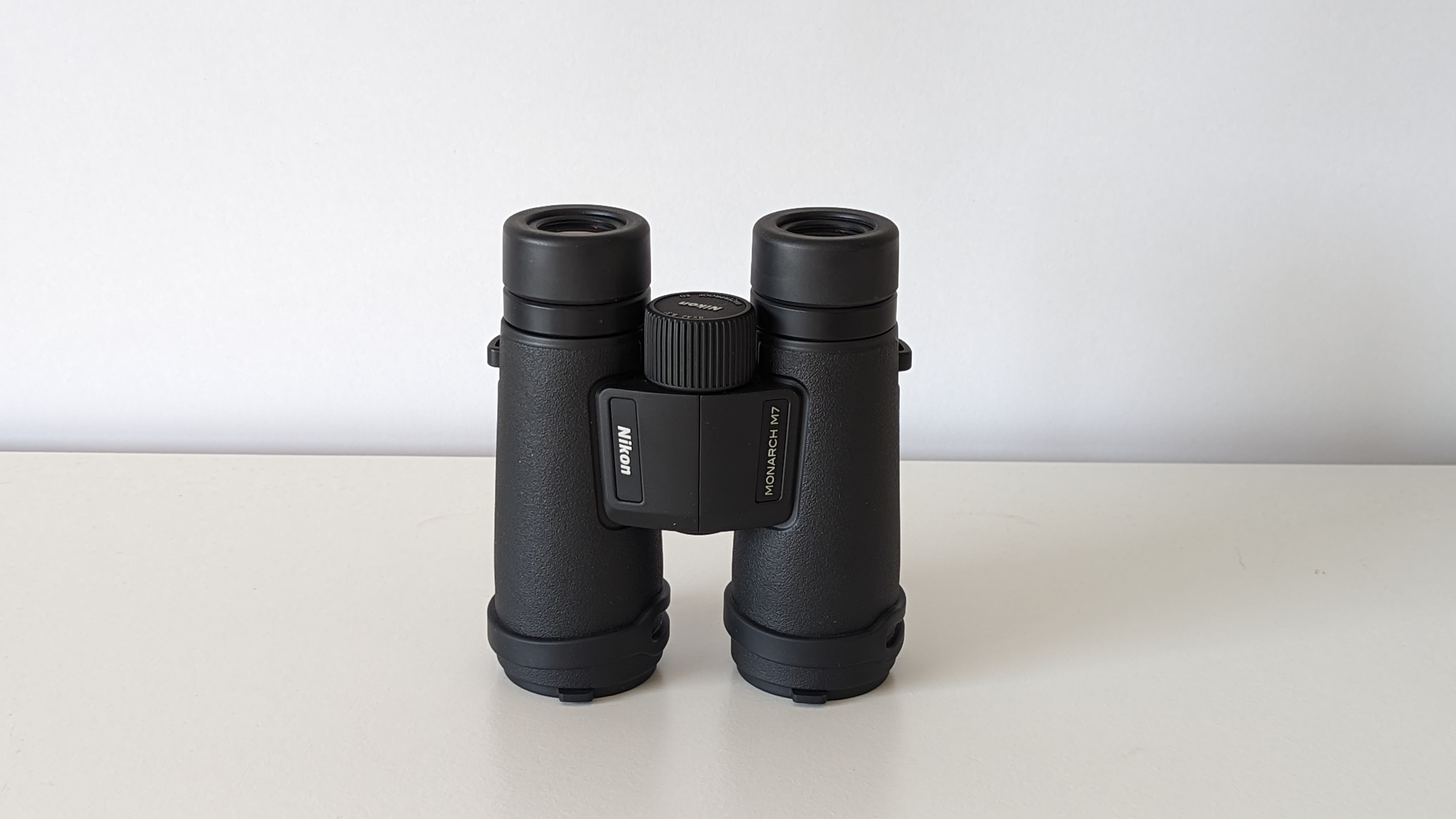Digital Camera World Verdict
The 8x magnification on the Monarch M7 8x42 binoculars makes them ideal for wide-field observing of nearby birds and wildlife.
Pros
- +
Impressive edge-to-edge sharpness
- +
Minimal color fringing
- +
Comfortable rubberized grip
Cons
- -
Mid-tier price point
- -
Some will prefer higher magnification versions
Why you can trust Digital Camera World
The Nikon Monarch M7 binoculars have a slim roof prism design and are available in four different model variants: 8x30, 8x42, 10x30, and 10x42. I'm reviewing the 8x42 version here which is better suited to closer subjects due to the slightly lower magnification.
The Monarch line is one of Nikon's flagship series of sports optics and covers both binoculars and fieldscopes. They are the most expensive lines of optics Nikon offers but that also brings with it a premium finish and superior sharpness and fidelity in the optics.
While the 10x42 version is a more generalist combination for many observers, the 8x42 excels in urban or rural areas where seeing the bigger picture is important. This is especially true of flying birds and fast-moving subjects that would otherwise be difficult to track with higher-magnification binoculars. The Monarch M7 8x42s are waterproof, fogproof, and are small and light enough to slip inside a large jacket pocket. Shipped accessories feel premium and a locking dioptre ring ensures focus is maintained throughout general use in the field.

Nikon Monarch M7 8x42 Specifications
| Design | Roof prism |
| Exit pupil | 5.3mm |
| Eye relief | 17.1mm |
| Weight | 669g |
| Dimensions | 142 x 129mm |
| Magnification | 10x and 8x |
| Objective lenses | 42mm and 30mm |
| Durability | Waterproof and fog proof |
Nikon Monarch M7 8x42 Key Features
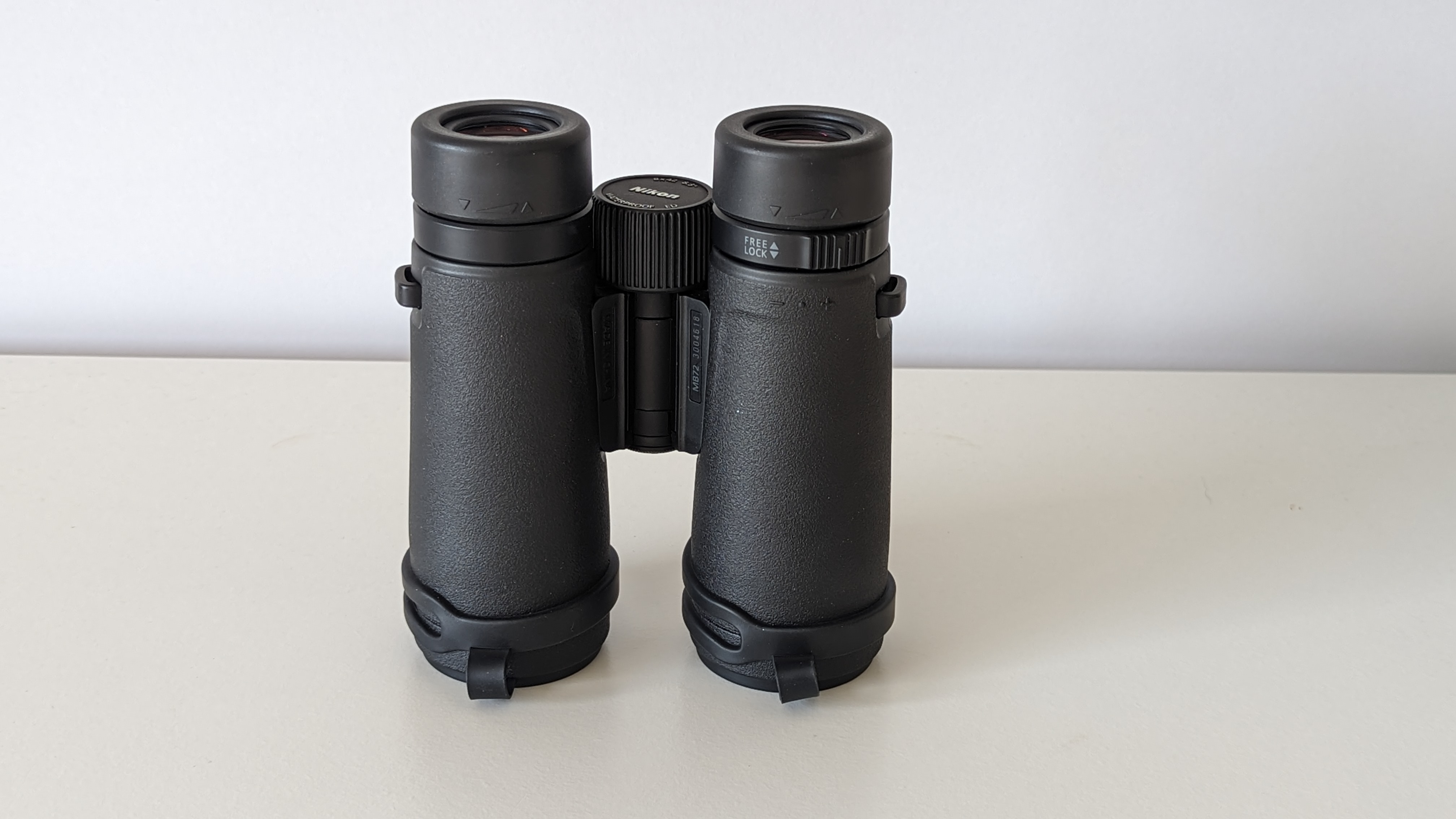
As one would come to expect from a premium line of Nikon binoculars the Monarch M7s have a locking dioptre ring. This is extremely useful for avoiding right-eye defocusing when taking the binoculars out of the carry bag or when moving between locations. It speeds up observations just that much more and I felt that I kept up with the pace of fast-moving wildlife when observing that I otherwise would've missed if I didn't have this feature. That's crucial in a pair of 8x magnification binoculars because of a wider visible scene giving better views of up-close subjects like flighty birds.
They also come with a tripod adapter mount that can be revealed through the unscrewing of the central Nikon badge at the front of the binoculars. While this isn't quite as useful for wildlife or aviation observing during the day on the 8x (this is more helpful on the 10x, especially for those with shaky hands and arms or lower grip strength) it does help if trying to stargaze at night where longer observing times are necessary whilst the eyes are adjusting.
17.1mm of eye relief is a welcome addition and a step up from the lower-tier Prostaff P7 10x42 which I previously reviewed. This gives additional length adjustment to the eyepieces so that even eyeglasses wearers can enjoy using the binoculars comfortably without the need to take off their spectacles.
Nikon Monarch M7 8x42 Build & Handling
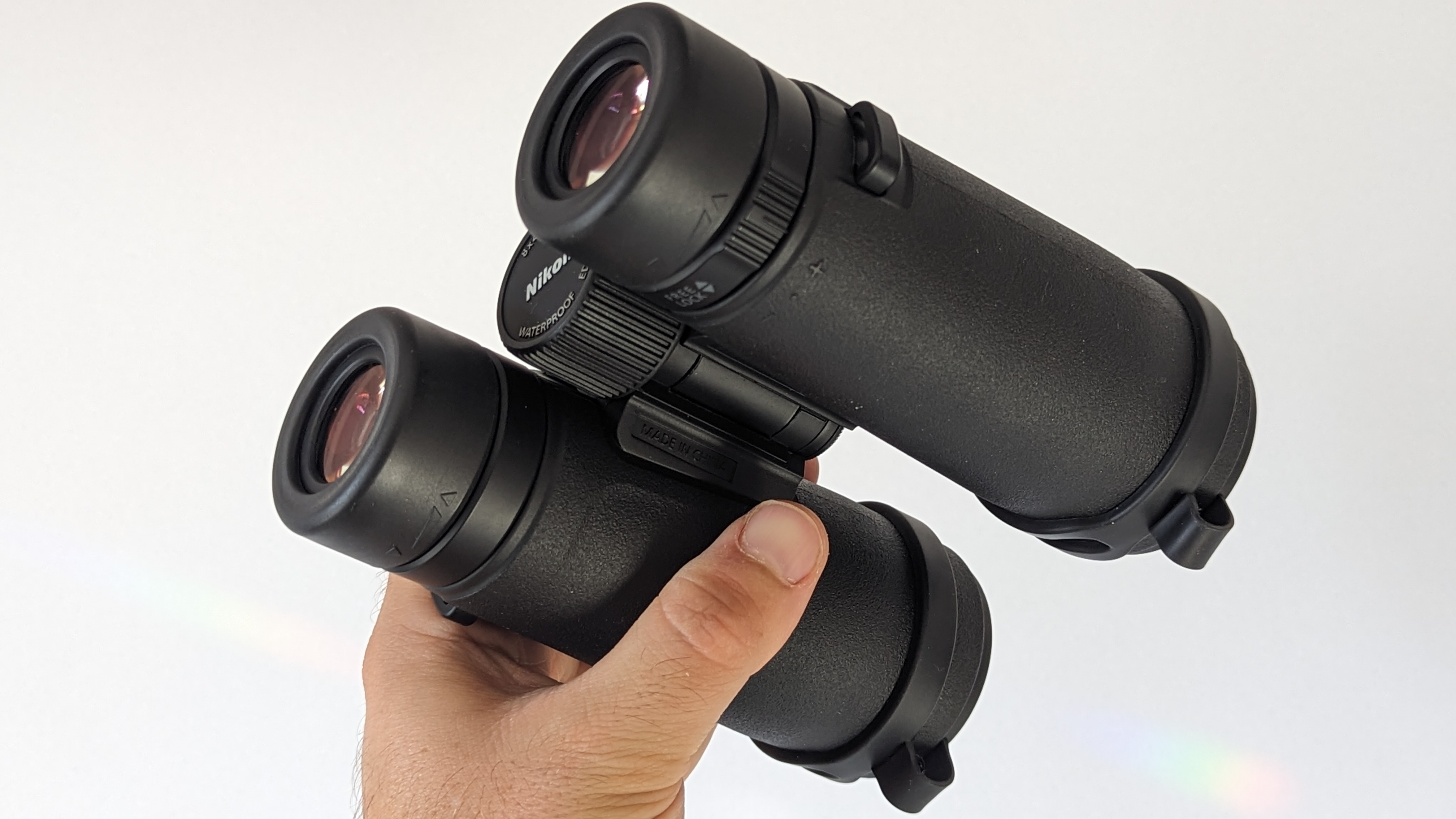
In typical Nikon binocular fashion, the Monarch M7 8x42 has a utilitarian look with an almost combative-looking appearance and an easy-to-remove knurled tripod adapter cover. Operating them during light showers is easy as the textured rubberized coating that envelops the binocular body provides all the grip I need to observe without fear of dropping or slipping.
While the 42mm versions of the Monarch M7 are slightly heavier than their 30mm counterparts, at under 680g (669g in the case of the 8x42) I felt they were comfortable to wear around the neck all day. A plush, wide padded neoprene neckstrap cushioned and well distributed the weight around my neck, and the long adjustable straps were simple to make fit.
The objective lens caps, strapped to the ends of the binoculars whilst a little awkward-looking did a fantastic job of staying put. I didn't feel the need to slip them off at any point because the caps fold back when placing them vertically on a table in a wildlife hide or at home. The caps fit snugly to the ends with a gentle push and seemed to form a secure seal around the lenses, staying in place without fear of water or dust ingress.
Nikon Monarch 8x42 Performance
Aside from the Nikon Monarch HG 10x42 binoculars which I previously reviewed the Nikon Monarch M7 8x42 binoculars are some of the best Nikon binos I've ever had the pleasure of testing. Optical clarity and sharpness through the generous 5.3mm exit pupil give excellent views from edge to edge. This is backed by extra-low dispersion (ED) glass inside that corrects color fringing (otherwise known as chromatic aberration).
The phase-correction coatings on the binocular glass maintain a high degree of contrast so that subjects are rendered in good fidelity. What's more, the binoculars are waterproof up to one meter for a maximum of 10 minutes — no more covering them up or putting them back in the bag when it starts to rain. It also means that even if you accidentally drop them in a nearby puddle or stream, they should still work fine (so long as they aren't damaged).
Not only this but the coating is also oil repellant, as I experienced when accidentally leaving fingerprints on the glass. A quick wipe with a microfibre cloth removed the prints, even without glass cleaner.
Nitrogen-purging in the interior cavity of the binoculars dissuades any fog build-up when moving between warm and cold locations. This speeds up observing opportunities when moving from inside the house or car and stepping outside into colder climes.
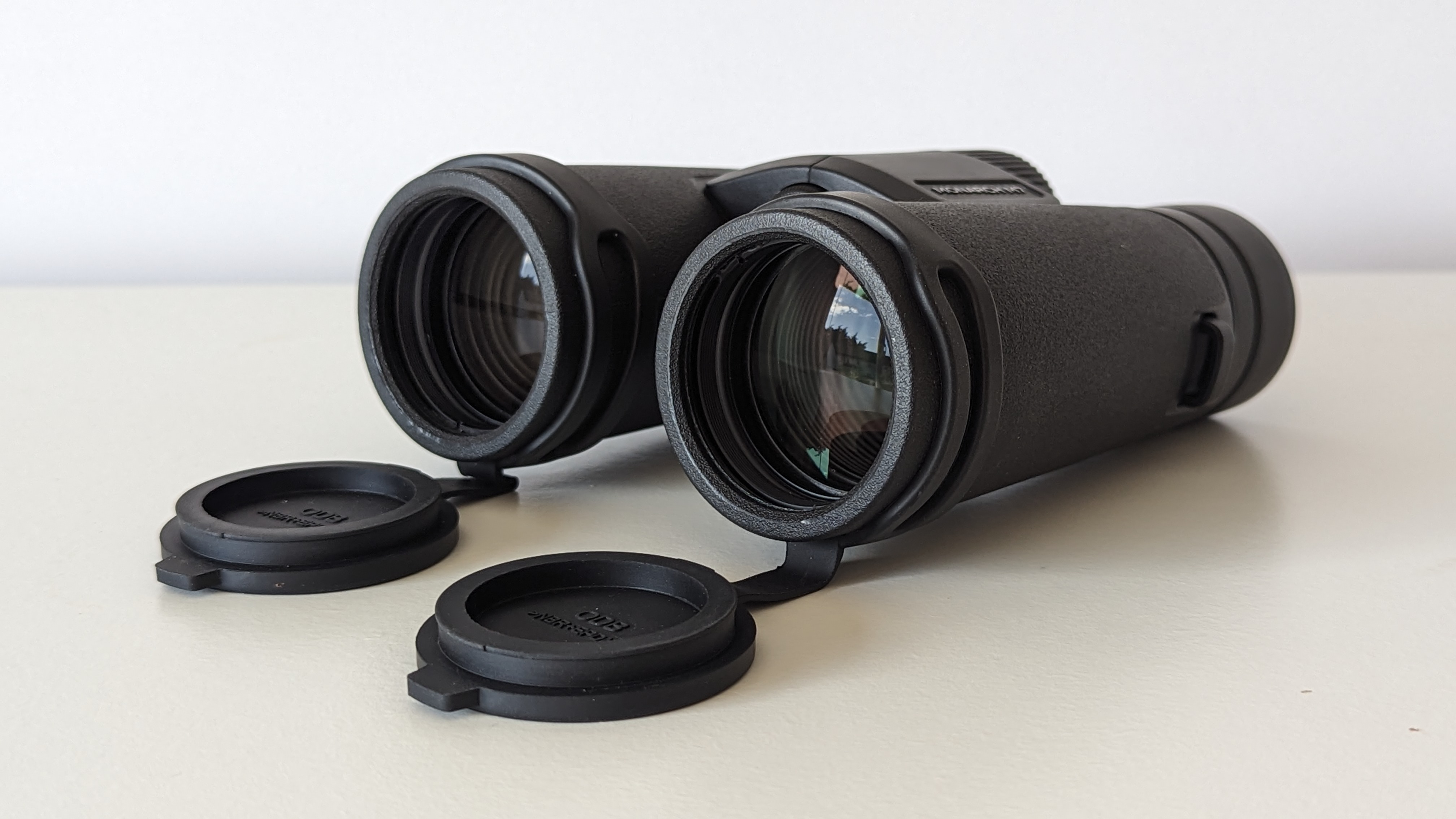
Nikon Monarch M7 8x42 Verdict
The M7 8x42s are binoculars that suit keen hobbyists or observers who want to invest a little bit more in their kit but ultimately don't want to spend four figures. At around $439 / £489 they happily sit in the middle of Nikon's binocular price range. I think the lack of chromatic aberration, excellent build quality, snug-fitting lens caps, and premium finish such as the cushion neckstrap and locking dioptre ring make them a safe bet for anyone who wants quality observing.
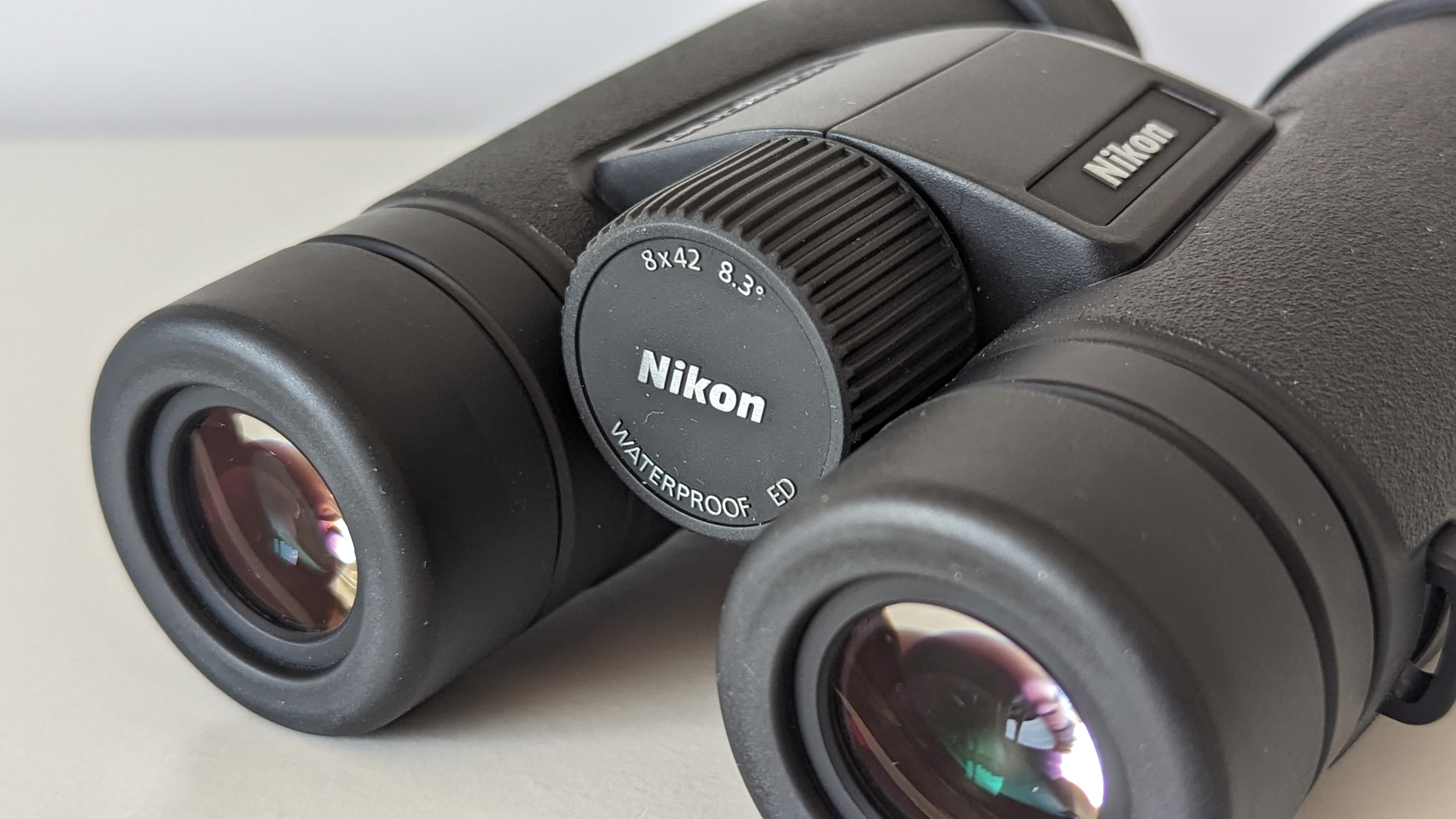
Nikon Monarch M7 8x42 Alternatives
If wide-field observing isn't going to be your main priority I would recommend going with the 10x42 version of the Monarch M7. I think these are the better option with them only being slightly larger and heavier than the 10x30 model because they're better able to be used into twilight due to the larger objective lenses.
However, if Nikon is your binocular brand of choice but you don't have the budget, I'd definitely recommend the Prostaff P7 range. I previously reviewed the Nikon Prostaff P7 10x42 and gave them 4.5/5 stars for their great optics and strong build. They even feature a locking dioptre which is a pleasant surprise at this price point.
Happy to invest a little more? You can't beat the top-of-the-range Nikon Monarch HG 10x42. Also scoring near-perfect marks, these tip the scales into the four-figure area (only just) but boy do they deliver clear views. I'd say they're almost flawless, but I'd like to see the carry bag have neckstrap connections at this price.
Jase Parnell-Brookes is an award-winning photographer, educator and writer based in the UK. They won the Gold Prize award in the Nikon Photo Contest 2018/19 and was named Digital Photographer of the Year in 2014. After completing their Masters Jase has spent a good chunk of two decades studying and working in photography and optics shooting and writing all over the world for big-name brands and media outlets. Now the Channel Editor for Cameras and Skywatching at Space.com their speciality is in low light optics and camera systems.
